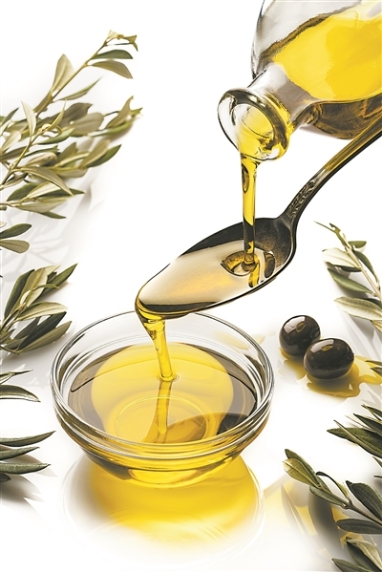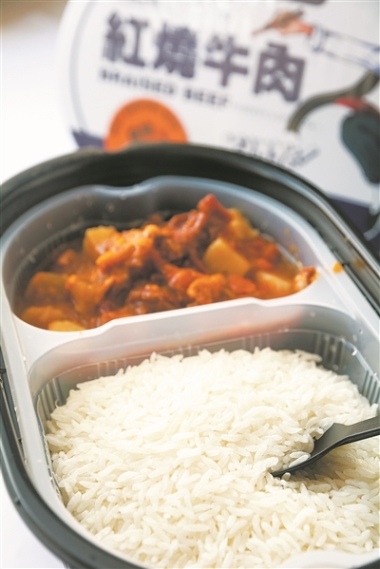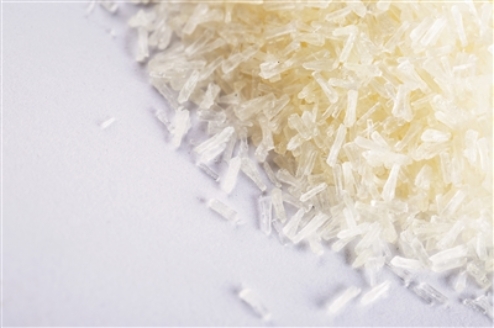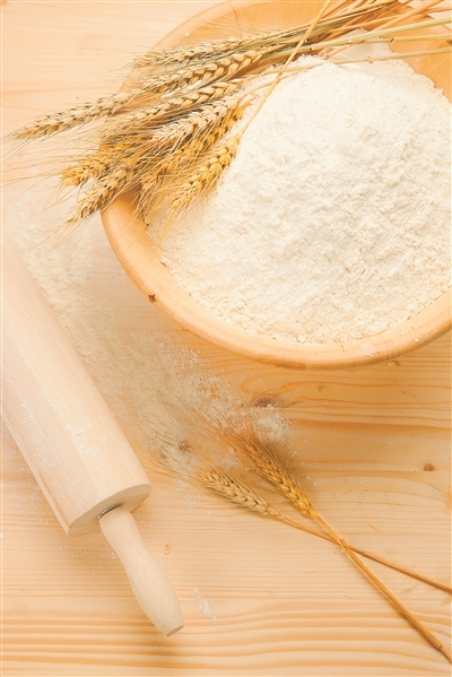
Academic Exchanges
[Media Focus] "Science and Technology Daily" Interviews Professor Zhou Zhongkai and Professor Wang Hao from the School of Food Science and T
On October 12, "Science and Technology Daily" interviewed Professor Zhou Zhongkai and Professor Wang Hao from the School of Food Science and Technology at Tianjin University of Science & Technology to address issues related to food safety.
Professor Zhou Zhongkai from the School of Food Science and Technology at Tianjin University of Science & Technology introduced during the interview with the reporter from Science and Technology Daily, "There are many methods for extracting oil from plant oilseeds, including the extraction method, pressing method, and aqueous media method." Regardless of the oil production method, they have all undergone rigorous scientific research and experimental verification. The related production processes, equipment, and final products must all be reviewed by relevant national departments. As long as the edible vegetable oil is produced in accordance with national standards and meets national food safety standards and product quality standards, it is absolutely safe, and consumers can rest assured.
In today's increasingly fast-paced life, the emergence of self-heating hot pots, self-heating rice, self-heating noodles, etc., has made meals more convenient. However, self-heating rice differs in taste and appearance from ordinary rice, leading to widespread rumors on the internet that "self-heating rice is made of plastic." In response, Professor Wang Hao from the School of Food Science and Technology at Tianjin University of Science & Technology stated during the interview with the reporter from Science and Technology Daily that there are currently three main types of rice used in self-heating rice: α-rice, sterile rice, and composite rice. The ingredients of these three types of rice are all rice and have no relationship with plastic.
The original text is reprinted as follows:
http://digitalpaper.stdaily.com/http_www.kjrb.com/kjrb/html/2023-10/12/content_560868.htm?div="-1




As the chrysanthemums turn yellow and the crabs become fat, it's not just crabs that are in season. Coinciding with the autumn harvest, the newly available seasonal foods greatly enrich people's dining tables. However, last month, some rumors about food spread wildly on the internet: concerns about the safety of oil extracted using the solvent extraction method, claims that self-heating rice is made of plastic, assertions that MSG produces carcinogens when heated, and allegations that flour contains large amounts of talc... These rumors caused widespread anxiety and significantly dampened people's enthusiasm for "putting on some autumn weight."
Today, Science and Technology Daily reporters will review the rumors from September one by one, helping you dispel the myths and find the truth.
Is there a hidden danger in oil extracted using the solvent extraction method?
The truth: It is a widely adopted advanced technology.
Peanut oil, soybean oil, olive oil, sunflower seed oil... These commonly consumed vegetable oils by the general public were blacklisted in September. A video titled "Would You Still Dare to Eat These Vegetable Oils?" was widely spread on the internet last month. The "health expert" in the video claimed that there are safety risks associated with the "solvent extraction method and modern oil processing technology" for vegetable oils, urging consumers to eat more animal fats and avoid vegetable oils as much as possible.
In response, the Oil and Fat Branch of the China Cereals and Oils Association publicly issued a statement to debunk the rumor, pointing out that the solvent extraction method uses safe solvents to extract oil from vegetable oilseeds, which is an advanced oil extraction technology.
Currently, the solvent extraction method has been widely recognized and promoted internationally. In developed countries, over 90% of vegetable oils are produced using this method. In China, oils prepared using the solvent extraction method account for more than 80% of the total oil output, and the related technology has reached the international advanced level.
"There are many methods for extracting oil from vegetable oilseeds, including the solvent extraction method, pressing method, and aqueous media method," explained Professor Zhou Zhongkai from the School of Food Science and Technology at Tianjin University of Science & Technology in an interview with Science and Technology Daily. Regardless of the oil extraction method, they have all undergone rigorous scientific research and experimental verification. The related production processes, equipment, and final products must all be reviewed by relevant national departments. As long as the edible vegetable oil is produced in accordance with national standards and meets national food safety standards and product quality standards, it is absolutely safe, and consumers can rest assured.
Regarding the "health expert's" view of encouraging people to eat animal fats, Zhou Zhongkai said, "In fact, both vegetable oils and animal fats mainly consist of triglycerides, but their fatty acid compositions differ. Generally, animal fats are rich in saturated fatty acids, while vegetable oils are mainly composed of unsaturated fatty acids. Both saturated and unsaturated fatty acids are nutrients that the human body needs. Moderate intake of both is beneficial; conversely, if one is biased towards either, the disadvantages outweigh the advantages."
Is self-heating rice made of plastic?
The truth: It has no relationship with plastic.
In today's increasingly fast-paced life, the emergence of self-heating hot pots, self-heating rice, self-heating noodles, etc., has made meals more convenient. However, self-heating rice differs in taste and appearance from ordinary rice, leading to widespread rumors on the internet that "self-heating rice is made of plastic."
In response, Professor Wang Hao from the School of Food Science and Technology at Tianjin University of Science & Technology stated in an interview with Science and Technology Daily that there are currently three main types of rice used in self-heating rice: α-rice, sterile rice, and composite rice. The ingredients of these three types of rice are all rice and have no relationship with plastic.
α-rice is a product obtained by steaming, drying, and dehydrating natural rice. Sterile rice is a product obtained by steaming natural rice without drying or dehydrating, and then directly packaging it sterilely. Composite rice, which is adopted by most brands in the self-heating rice industry, is made by grinding natural rice into powder, mixing it with corn starch, konjac flour, etc., adding water to make a rice paste, steaming and drying the paste, and then pressing it into the shape of rice grains before polishing.
"These processed rices can be quickly cooked with only a small amount of heat from the outside," Wang Hao said.
"Making rice from plastic is not only costly but also produces harmful substances at high temperatures, making it unfit for consumption," Wang Hao explained. As the market share of self-heating foods continues to expand, related food safety standards are also constantly improving. Self-heating rice produced by reputable manufacturers that meet national food safety standards is safe, and consumers can eat it with confidence.
Does MSG produce carcinogens when heated?
The truth: The impact on the human body is negligible.
Recently, there has been a wave of enthusiasm for domestic products on the internet, and in September, the long-neglected domestic brand Lihua MSG regained popularity. At the same time, the rumor that "killed" MSG—that MSG produces carcinogens when heated—reappeared.
In response, Wang Hao said that the main ingredient of MSG in China is sodium glutamate, which is derived from wheat. "After MSG is absorbed in the human intestinal tract, sodium glutamate is broken down into glutamic acid. The latter is one of the essential amino acids for the human body, which can participate in glucose metabolism in the liver and reduce the concentration of ammonia in the blood. Glutamic acid also participates in the metabolism of proteins and sugars in the brain and can improve the function of the brain and nerve centers to a certain extent. Therefore, MSG has certain benefits for human health," he said.
When the temperature exceeds 120 degrees Celsius, sodium glutamate in MSG undergoes a series of chemical reactions with other substances, converting it into pyroglutamic acid sodium. "The reason why people believe that MSG is carcinogenic is because pyroglutamic acid sodium is a component with carcinogenic effects. However, in the process of daily cooking, it is rare for the temperature of food to reach 120 degrees Celsius. Even if sodium glutamate in MSG is converted into pyroglutamic acid sodium, the amount is very small, and the impact on the human body is negligible," Wang Hao explained.
Wang Hao suggested that since pyroglutamic acid sodium also reduces the flavor of MSG, it is best to add MSG before serving when cooking. This is not only healthier but also better utilizes MSG's ability to enhance flavor.
Does flour contain large amounts of talc?
The truth: National standards prohibit the use of this additive.
Chinese dining tables cannot do without various types of flour-based foods such as steamed buns, dumplings, mantou, noodles, etc. However, in September, videos such as "The Technology in Flour Makes One Think Twice" and "The 'Technology and Tricks' in Flour" spread on the internet, claiming that "processing companies add large amounts of talc and other additives during flour production." As a result, some netizens became concerned about the safety of flour.
In response, the Grain and Oil Marketing and Technology Branch of the China Cereals and Oils Association issued a solemn statement pointing out that the content of the videos was seriously inconsistent with the facts.
Zhou Zhongkai explained that due to differences in protein, starch, and other component contents among wheat varieties and regions, as well as variations in trace elements, starch, and protein content from the outer layers to the inner layers of the same wheat kernel, flour production plants adjust the processing precision of wheat to better meet the needs of different food processing.
"Apart from the common high, medium, and low gluten flours, there are also many specialized flours on the market for specific food processing, such as bread flour, mantou flour, and cake flour. Although these products have different names from ordinary flour, they are all processed products mainly made from wheat," Zhou Zhongkai said. "The National Hygienic Standard for the Use of Food Additives and local mandatory standards and regulations have clear requirements for the types and amounts of additives used. Talc is not allowed to be added to flour; products produced by relevant manufacturers are also subject to random inspections, so consumers can purchase and eat them with confidence."

